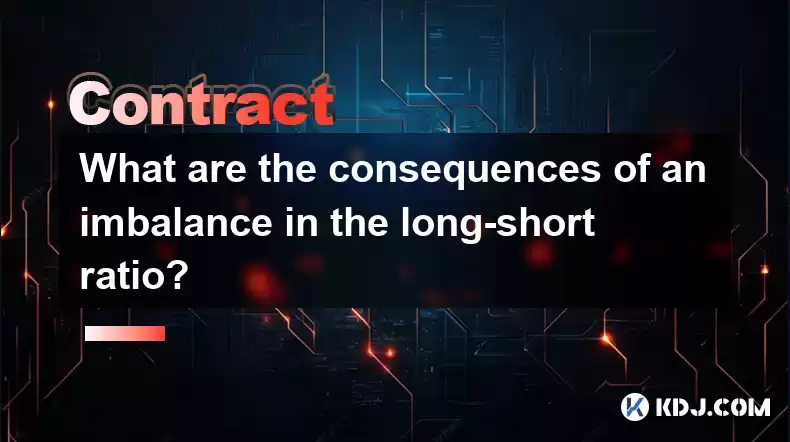-
 Bitcoin
Bitcoin $116700
0.24% -
 Ethereum
Ethereum $3973
4.34% -
 XRP
XRP $3.283
7.68% -
 Tether USDt
Tether USDt $1.000
0.01% -
 BNB
BNB $789.8
2.27% -
 Solana
Solana $176.2
3.31% -
 USDC
USDC $0.9999
0.00% -
 Dogecoin
Dogecoin $0.2238
5.14% -
 TRON
TRON $0.3389
-0.51% -
 Cardano
Cardano $0.7907
4.03% -
 Stellar
Stellar $0.4527
10.02% -
 Hyperliquid
Hyperliquid $41.07
4.27% -
 Sui
Sui $3.794
1.77% -
 Chainlink
Chainlink $19.49
10.40% -
 Bitcoin Cash
Bitcoin Cash $580.9
0.74% -
 Hedera
Hedera $0.2617
4.32% -
 Avalanche
Avalanche $23.41
3.67% -
 Ethena USDe
Ethena USDe $1.001
-0.03% -
 Litecoin
Litecoin $122.4
1.38% -
 Toncoin
Toncoin $3.364
1.49% -
 UNUS SED LEO
UNUS SED LEO $8.988
0.37% -
 Shiba Inu
Shiba Inu $0.00001295
2.82% -
 Uniswap
Uniswap $10.62
5.75% -
 Polkadot
Polkadot $3.922
4.46% -
 Dai
Dai $1.000
0.01% -
 Bitget Token
Bitget Token $4.494
2.15% -
 Monero
Monero $268.0
-1.30% -
 Cronos
Cronos $0.1523
3.68% -
 Pepe
Pepe $0.00001127
4.43% -
 Aave
Aave $285.4
4.85%
What are the consequences of an imbalance in the long-short ratio?
An imbalance in the long-short ratio can increase market volatility, affect trading strategies, reduce liquidity, enable manipulation, and influence overall market sentiment in crypto trading.
Apr 13, 2025 at 02:50 pm

The long-short ratio is a critical metric in the cryptocurrency trading world, reflecting the balance between bullish and bearish sentiments among traders. An imbalance in this ratio can have significant consequences on the market dynamics, affecting everything from price volatility to trading strategies. Understanding these consequences is essential for traders looking to navigate the crypto markets effectively.
Impact on Market Volatility
An imbalance in the long-short ratio can lead to increased market volatility. When there is a significant skew towards either long or short positions, it often signals a strong market sentiment in one direction. For instance, if the ratio heavily favors long positions, it indicates that a majority of traders are betting on price increases. This can create a self-reinforcing cycle where the price continues to rise due to increased buying pressure, leading to heightened volatility.
Conversely, a high short position ratio suggests that many traders are anticipating a price drop. This can result in rapid price declines as short sellers sell off their positions, further driving down the price and increasing volatility. The key takeaway here is that an imbalance in the long-short ratio can amplify price movements, making the market more unpredictable and potentially more risky for traders.
Influence on Trading Strategies
Traders often adjust their strategies based on the long-short ratio. When the ratio is imbalanced, it can signal potential market reversals or continuations, influencing how traders position themselves. For example, if the long-short ratio is heavily skewed towards long positions, some traders might see this as an opportunity to take short positions, anticipating a market correction.
On the other hand, a high short position ratio might encourage some traders to go long, expecting a short squeeze where short sellers are forced to buy back their positions at higher prices, driving the market up. Therefore, an imbalance in the long-short ratio can lead to strategic shifts among traders, as they attempt to capitalize on or protect against the prevailing market sentiment.
Effect on Liquidity
An imbalance in the long-short ratio can also affect market liquidity. When the ratio is heavily skewed, it can lead to a concentration of positions on one side of the market, potentially reducing the number of counterparties willing to take the opposite side of a trade. This can result in lower liquidity, making it more difficult for traders to enter or exit positions without significantly impacting the market price.
For instance, if the long-short ratio is heavily tilted towards long positions, there might be fewer traders willing to sell, leading to a thinner order book and wider bid-ask spreads. This can make trading more costly and challenging, particularly for large orders. Conversely, a high short position ratio can lead to a similar liquidity crunch on the buy side, affecting the ease with which traders can execute their trades.
Potential for Market Manipulation
An imbalance in the long-short ratio can also create opportunities for market manipulation. When the ratio is heavily skewed, it can be easier for large traders or groups of traders to influence the market by taking positions that exacerbate the existing imbalance. For example, if the long-short ratio is heavily favoring long positions, a large trader might take a significant short position to trigger a market correction, profiting from the subsequent price drop.
Similarly, in a market with a high short position ratio, a coordinated effort to buy back positions can lead to a short squeeze, driving prices up rapidly. These manipulative tactics can be particularly effective in markets with low liquidity, where even small trades can have a significant impact on prices. Therefore, an imbalance in the long-short ratio can increase the vulnerability of the market to manipulation, posing risks to all participants.
Impact on Market Sentiment
Finally, an imbalance in the long-short ratio can significantly influence overall market sentiment. When the ratio is heavily skewed, it can create a feedback loop where the prevailing sentiment becomes self-reinforcing. For example, a high long position ratio can lead to increased optimism among traders, further driving up the price and reinforcing the bullish sentiment.
Conversely, a high short position ratio can lead to increased pessimism, driving down the price and reinforcing the bearish sentiment. This can create a herd mentality where traders follow the crowd, exacerbating the imbalance and potentially leading to market bubbles or crashes. Therefore, understanding the long-short ratio and its impact on market sentiment is crucial for traders looking to make informed decisions.
Frequently Asked Questions
Q: How can traders use the long-short ratio to predict market movements?
A: Traders can use the long-short ratio as an indicator of market sentiment. A high long position ratio might suggest that the market is overbought and due for a correction, while a high short position ratio might indicate an oversold market ripe for a rebound. By monitoring changes in the ratio, traders can anticipate potential shifts in market direction and adjust their strategies accordingly.
Q: What tools can traders use to monitor the long-short ratio?
A: Several platforms and tools provide real-time data on the long-short ratio. Popular options include trading platforms like Binance and Coinbase, as well as specialized analytics tools like CoinGlass and CryptoQuant. These tools offer detailed insights into market positions, helping traders stay informed about the current state of the long-short ratio.
Q: Can an imbalance in the long-short ratio be used to identify trading opportunities?
A: Yes, an imbalance in the long-short ratio can highlight potential trading opportunities. For instance, a heavily skewed ratio might signal an impending market correction or reversal, allowing traders to position themselves accordingly. By identifying these imbalances, traders can take advantage of market inefficiencies and potentially profit from the resulting price movements.
Q: How does the long-short ratio affect different types of traders?
A: The long-short ratio can impact different types of traders in various ways. For day traders, an imbalanced ratio might signal short-term trading opportunities based on expected price volatility. For swing traders, it can indicate potential trend reversals or continuations, influencing their longer-term positions. For institutional traders, an imbalanced ratio might affect their risk management strategies and overall market exposure.
Disclaimer:info@kdj.com
The information provided is not trading advice. kdj.com does not assume any responsibility for any investments made based on the information provided in this article. Cryptocurrencies are highly volatile and it is highly recommended that you invest with caution after thorough research!
If you believe that the content used on this website infringes your copyright, please contact us immediately (info@kdj.com) and we will delete it promptly.
- Roman Storm, Funding Effort, and the Looming Defense Retrial: A New York Minute on the Tornado Cash Case
- 2025-08-09 02:50:14
- Crypto's Wild Ride: XRP, Dogecoin, and the Altcoin Surge You Can't Ignore
- 2025-08-09 02:50:14
- Elon Musk, Bitcoin, and the Enduring Power of Approval: A Crypto Love Story?
- 2025-08-09 03:50:15
- Ruvi AI: The Next Big Thing After Ripple on CoinMarketCap?
- 2025-08-09 03:50:15
- Floki Price Surges: Elliott Wave and Fibonacci Setups Point to Potential Gains!
- 2025-08-09 02:30:16
- Pepe Price, RTX (Remittix?) & the $10K ETH Dream: NYC Crypto Chatter
- 2025-08-09 02:30:16
Related knowledge

What is the difference between realized and unrealized PNL on KuCoin?
Aug 09,2025 at 01:49am
Understanding Realized and Unrealized PNL on KuCoinWhen trading on KuCoin, especially in futures and perpetual contracts, understanding the distinctio...

How does KuCoin Futures compare against Binance Futures in terms of features?
Aug 09,2025 at 03:22am
Trading Interface and User ExperienceThe trading interface is a critical component when comparing KuCoin Futures and Binance Futures, as it directly i...

What is the distinction between mark price and last price on KuCoin?
Aug 08,2025 at 01:58pm
Understanding the Basics of Price in Cryptocurrency TradingIn cryptocurrency exchanges like KuCoin, two key price indicators frequently appear on trad...

What are the specific maker and taker fees on KuCoin Futures?
Aug 08,2025 at 08:28am
Understanding Maker and Taker Fees on KuCoin FuturesWhen trading on KuCoin Futures, users encounter two primary types of fees: maker fees and taker fe...

Can you explain the difference between cross margin and isolated margin on KuCoin?
Aug 09,2025 at 02:57am
Understanding Margin Trading on KuCoinMargin trading on KuCoin allows traders to borrow funds to increase their trading position beyond their actual c...

How can I open a long position on KuCoin Futures?
Aug 09,2025 at 02:07am
Understanding KuCoin Futures and Long PositionsOpening a long position on KuCoin Futures means you are speculating that the price of a cryptocurrency ...

What is the difference between realized and unrealized PNL on KuCoin?
Aug 09,2025 at 01:49am
Understanding Realized and Unrealized PNL on KuCoinWhen trading on KuCoin, especially in futures and perpetual contracts, understanding the distinctio...

How does KuCoin Futures compare against Binance Futures in terms of features?
Aug 09,2025 at 03:22am
Trading Interface and User ExperienceThe trading interface is a critical component when comparing KuCoin Futures and Binance Futures, as it directly i...

What is the distinction between mark price and last price on KuCoin?
Aug 08,2025 at 01:58pm
Understanding the Basics of Price in Cryptocurrency TradingIn cryptocurrency exchanges like KuCoin, two key price indicators frequently appear on trad...

What are the specific maker and taker fees on KuCoin Futures?
Aug 08,2025 at 08:28am
Understanding Maker and Taker Fees on KuCoin FuturesWhen trading on KuCoin Futures, users encounter two primary types of fees: maker fees and taker fe...

Can you explain the difference between cross margin and isolated margin on KuCoin?
Aug 09,2025 at 02:57am
Understanding Margin Trading on KuCoinMargin trading on KuCoin allows traders to borrow funds to increase their trading position beyond their actual c...

How can I open a long position on KuCoin Futures?
Aug 09,2025 at 02:07am
Understanding KuCoin Futures and Long PositionsOpening a long position on KuCoin Futures means you are speculating that the price of a cryptocurrency ...
See all articles

























































































